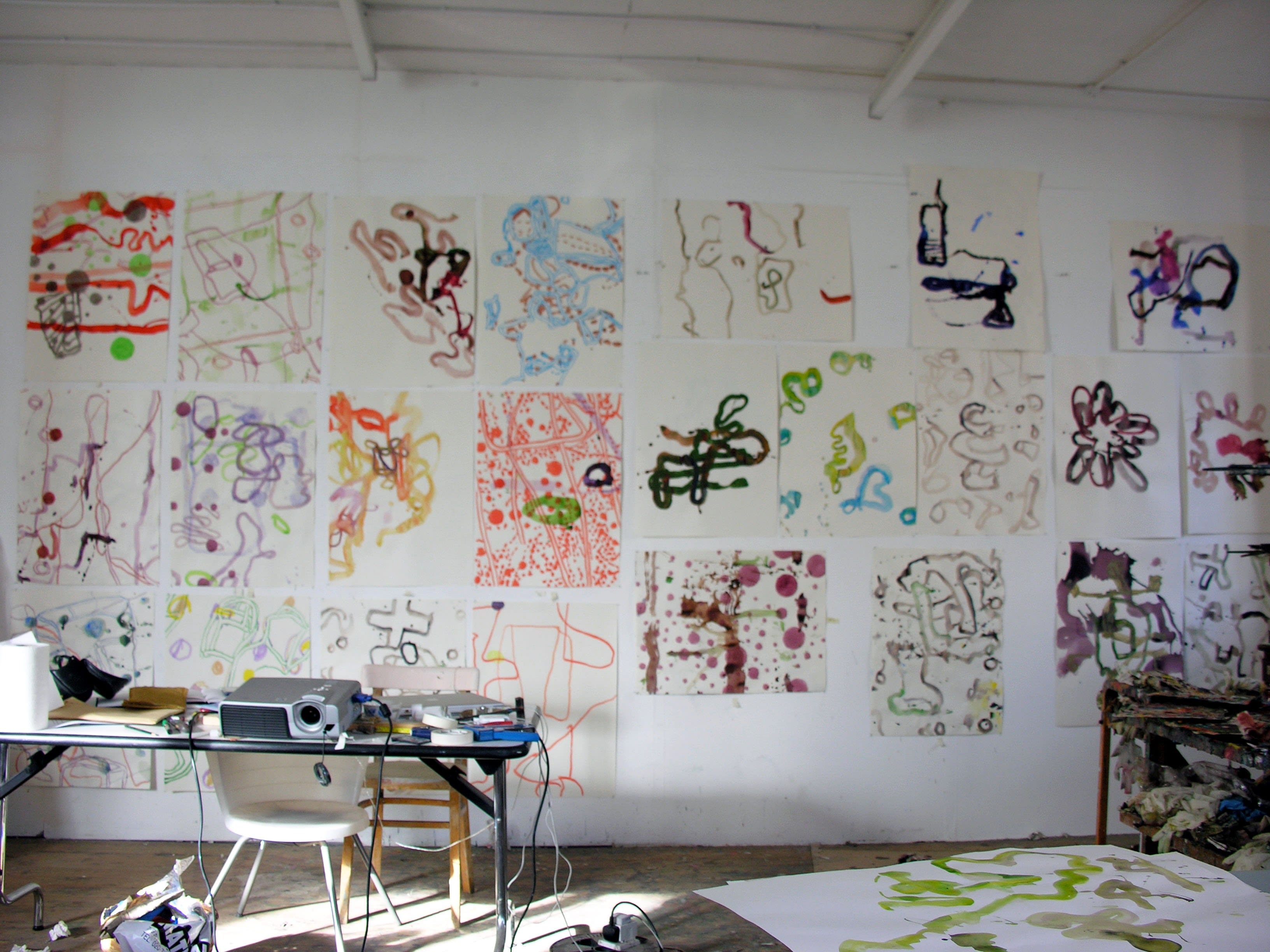On a rainy day in November, we paid a visit to the studio of Royal Watercolour Society artist James Faure Walker along with our friends at Schmincke. The RWS Spring exhibition, In the Studio, looks at the artists' relationship with their work space and how it affects the pieces produced.
Did you study art? What was your art college experience like?
I studied Fine Art, Painting, at St Martins from 1966 to 1970, including a term doing sculpture. I was lucky. I was there when Anthony Caro, William Tucker and Leon Kossoff, were teaching. There was much to absorb – the de Kooning show at the Tate, conceptual art just starting out. I was Sol Le Witt’s draughtsman for a while, making wall drawings at the ICA, and elsewhere. I was at the Royal College of Art til 1972. In 1976 I was one of the founders of Artscribe magazine and went on to edit it for eight years. It became a leading journal of contemporary art.

James in his studio at Martello Street, 1979. The painting opposite, Lazy Afternoons, 1979, was shown in the 1979 Hayward Annual
What does your studio mean to you and how have your working environments changed through your career?
I have had a SPACE studio since 1971, first at Martello Street (off London Fields), and since 2006 at Bridget Riley Studios (Hackney Wick). It is a place where I can make a mess, waste time, forget about everything apart from the paintings on the wall. I like to be there every day.

Wall of watercolour studies, 2008, in James' studio at Bridget Riley Studios
How has your painting style evolved over the years? Have you always painted abstracts?
I am not a card carrying ‘abstract’ painter. I use images all the time, draw a lot, use photos. I made a lot of ‘representational’ painting as a student, but in watercolour I just go for the play of colour, rhythm, the calligraphy of the brush, sometimes just to get the hang of what I need to do in the larger works. During the seventies and eighties I was caught up in the debates about post-modernism. It left me feeling unattached, sceptical of anything too sure of itself. Like others, I reacted against the chic aesthetic of minimal art. But what really changed my approach was computer graphics in the mid-eighties. It was baroque, visually promiscuous, liberating, and – quite a surprise – it opened a way of working in parallel with ‘painterly’ painting. My book, ‘Painting the Digital River’ (Prentice Hall) was published in the USA in 2006. Each chapter is headed by a watercolour. I continue to switch between watercolour, digital, oil - sometimes working fast, sometimes month upon month on the same painting.
James Faure Walker RWS, February 1 2019, watercolour
When did you get elected to the RWS and why did you decide to join?
I entered what was then known as the RWS open competition (now called the Contemporary Watercolour Competition) in 2013, and to my amazement won a prize. I have always made watercolours, sometimes as studies, as part of a daily routine. Most get edited out.
More like this on the Blog...
Read / Watch: Abstract Art: In the Studio with Lisa Traxler
Read / Watch: Linocut Printing: In the Studio with Anita Klein
Read / Watch: Relief Printing: In the Studio with Trevor Price
Watch: In the Studio with Bridget Moore.
Watch: In the Studio with Denis Ryan.



